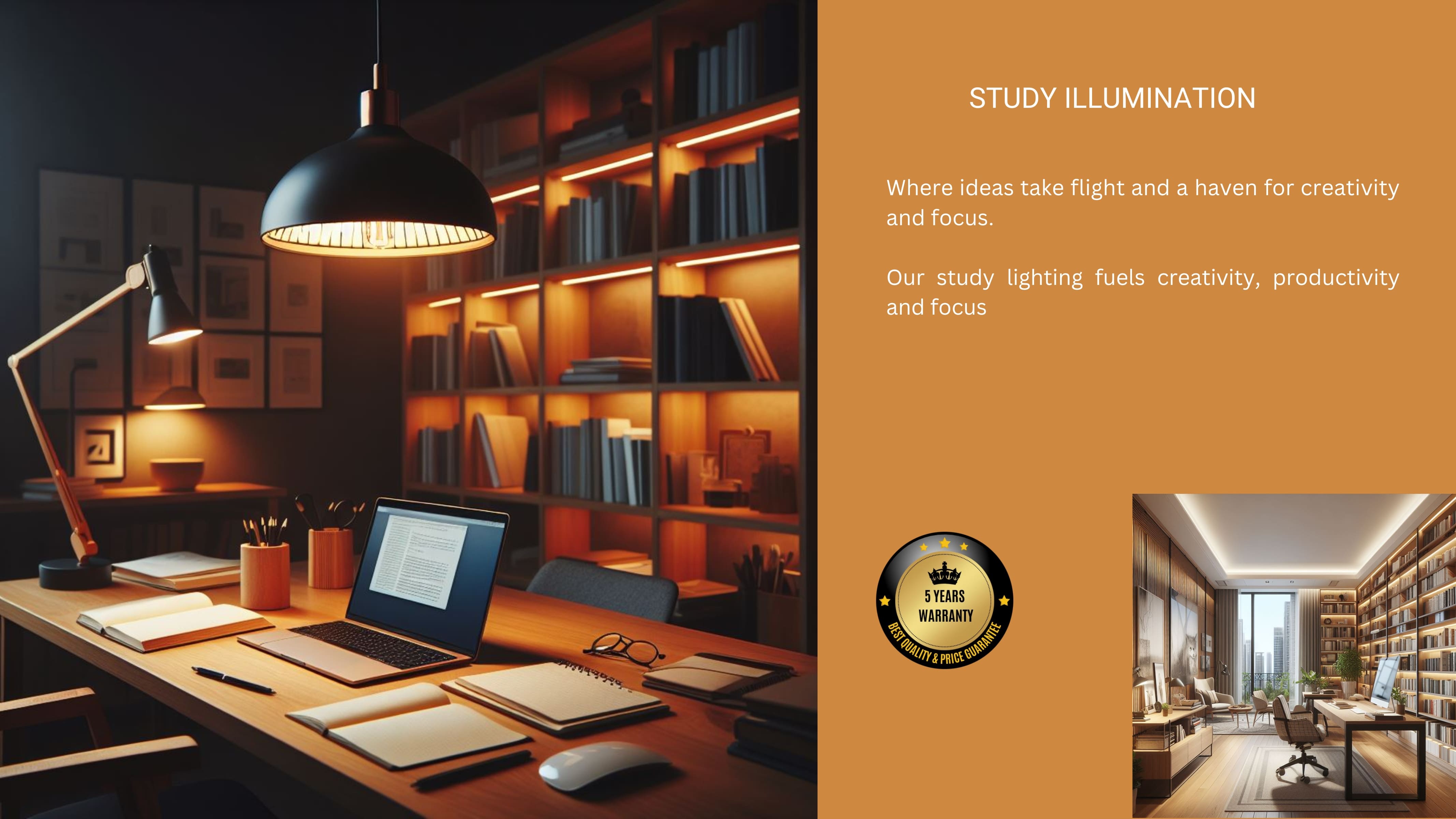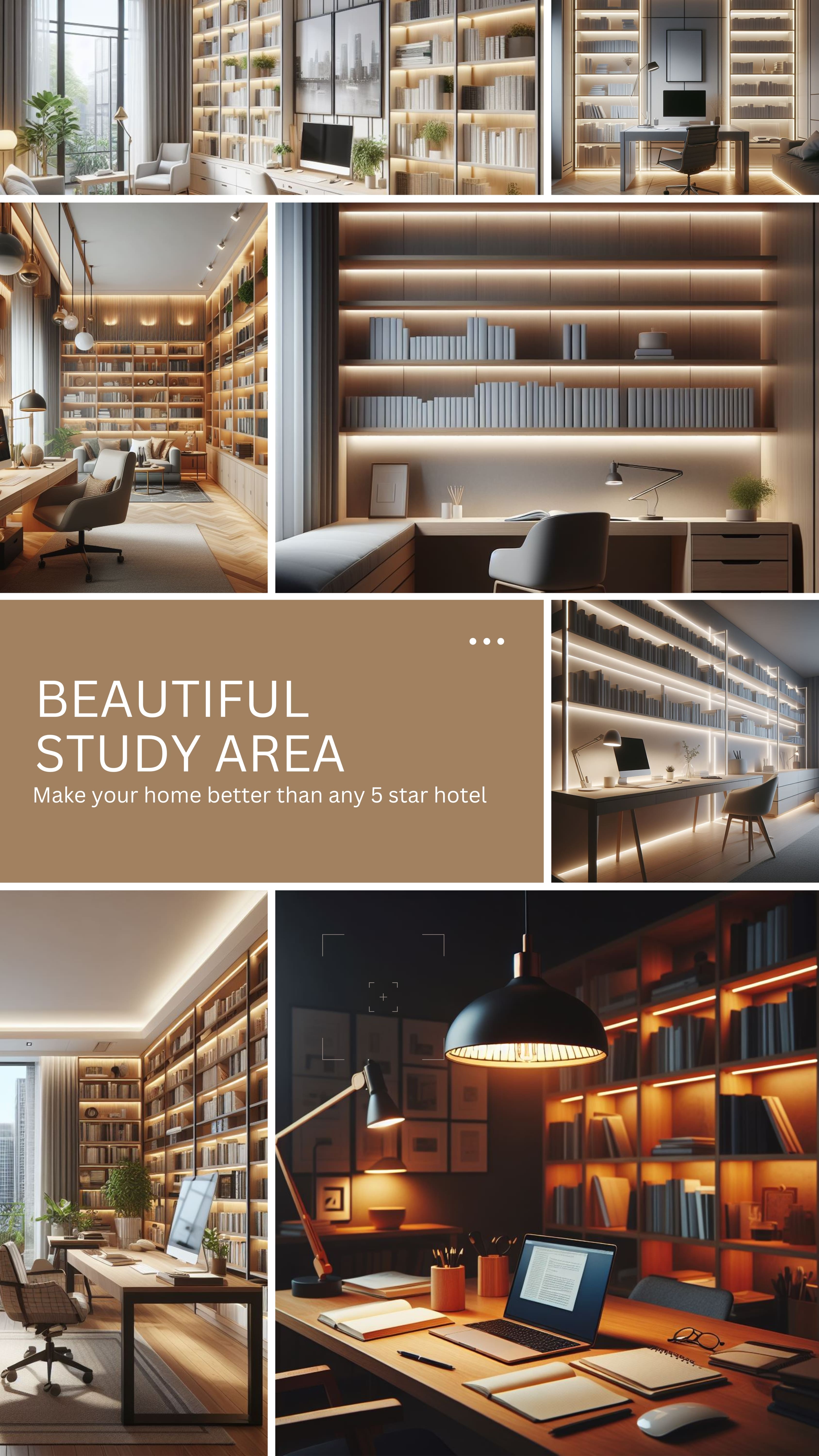


Where every detail unleashes the beauty - One room at a time
Give us a call / WhatsApp: +9199 8016 5580
Write to Us: [email protected]

STUDY ROOM – A beautiful home study room lighting ideas and elevating study spaces
Let’s explore the world of innovative linear lighting for study areas, where elegance, color temperature, and thoughtful design converge to create an optimal learning environment. The color of light can indeed impact our reading experience and overall well-being. Let’s explore this further:
1. Elegance Through Illumination: Linear lighting plays a crucial role in study spaces. Beyond mere functionality, it sets the tone for concentration and productivity. Here’s how to achieve elegance:
Click here read the full article
• Architectural Integration: Linear lights can seamlessly blend with the overall design. Whether minimalist or intricate, they enhance the aesthetics of the study area. Think of linear fixtures as sculptural elements that contribute to the room’s visual appeal.
2. Color Temperature Matters:
• Warm White (2700K to 3000K): This range creates a cozy and inviting ambiance, perfect for late-night study sessions. It promotes relaxation while maintaining focus.
• Cool White (4000K to 6000K): Consider cooler tones for daytime study. They mimic natural daylight, keeping you alert and energized. Cooler lighting also improves contrast, resulting in easier readability of text and screens
3. High Color Rendering Index (CRI): CRI measures how accurately a light source renders colors compared to natural sunlight. In study areas, high CRI is essential:
• Color Accuracy: When studying diagrams, charts, or artworks, accurate color representation matters. High CRI ensures you see details as intended.
• Reducing Eye Strain: Proper lighting reduces eye fatigue during long study hours. High Color Rendering Index (CRI) reduces color distortion, enhancing comfort during reading and writing tasks
4. Task Lighting and Flexibility:
• Linear lights can be strategically placed above study desks or workstations. Adjustable fixtures allow you to direct light precisely where needed. Dimmer switches provide flexibility, allowing you to customize brightness based on the task at hand.
5. Minimalist Designs:
• Clean lines and unobtrusive fixtures create a clutter-free study environment. Recessed linear lights in slatted ceilings or along bookshelves maintain simplicity while providing ample illumination.
Remember, thoughtful study area lighting enhances concentration, creativity, and overall well-being. Choose linear lighting that aligns with your personal style and study habits.
1. Color Temperature and Reading:
• Light color is measured in terms of color temperature, typically expressed in Kelvin (K). Warmer colors (lower Kelvin values) have a reddish-yellow hue, while cooler colors (higher Kelvin values) tend to be bluish-white.
• Warmer Colors (Red and Orange): These colors are soothing and can reduce eye strain. They create a cozy atmosphere and are great for casual reading or winding down before bed.
• Cooler Colors (Blue and White): Cooler colors enhance alertness and focus. They are well-suited for focused study sessions or tasks that demand concentration
• Personal Preferences: Keep in mind that individual preferences vary. Some people may find cooler light more comfortable for reading, while others prefer warmer tones.
2. Contrast Settings:
• High Contrast: For optimal readability, choose a comfortable contrast setting where the text appears crisp and easy to read without being harsh. High contrast can enhance visibility and reduce eye strain.
• Material You on Android 15: Android 15 may offer color contrast settings to make Material You colors easier on your eyes. Users have the ability to customize text appearance by adjusting contrast levels, including light, medium, and high.
3. Balancing Blue Light Exposure:
• While cooler light can improve alertness, excessive exposure to blue light (especially from screens) can disrupt sleep patterns.
• Consider using blue light filters or adjusting screen settings to reduce blue light emission during evening hours.
When searching for the ideal reading light, it’s essential to strike a balance between comfort, visibility, and personal preferences. By the way, did you know that natural lighting is considered the best for reading? Let me share some insights about it: Natural Lighting for Reading:
• Natural lighting, provided by the sun, is the most optimal form of light for reading. It closely resembles daylight and offers a balanced spectrum of colors.
• Benefits include reduced eye strain, improved cognitive performance, and enhanced mood.
• Exposure to natural light positively impacts productivity while reading.
• When selecting artificial light bulbs, consider opting for cool white or daylight bulbs with a color temperature ranging from 5000K to 6500K. These bulbs closely mimic natural sunlight and promote alertness and focus
• Adjustable task lights with dimming features allow readers to customize intensity according to their preferences and needs
• It is also important that the brightness level is suitable for reading without causing eye strain. A light output of 450-800 lumens is generally considered ideal for reading tasks
In summary, whether you’re studying, reading, or working, choosing the right light color can significantly impact your experience. Experiment with different tones to find what works best for you!
